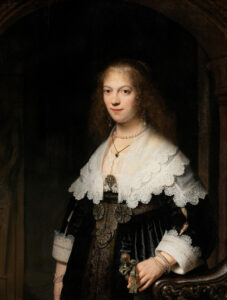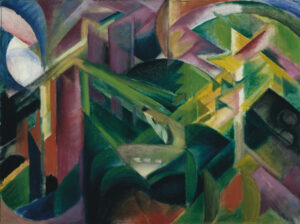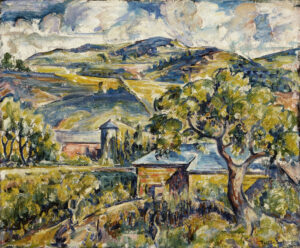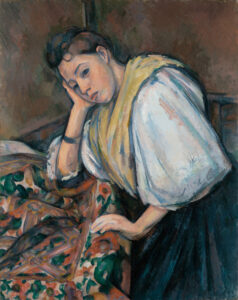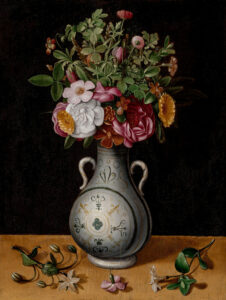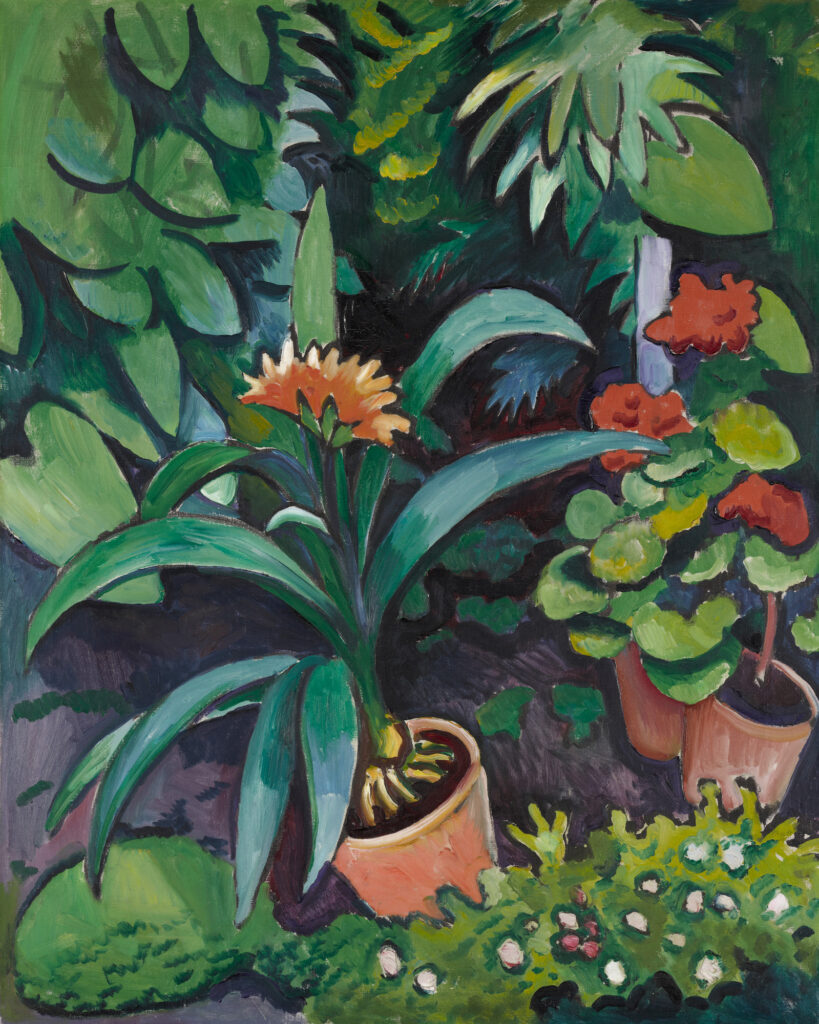
This plant still life illustrates August Macke’s Expressionist aesthetic at the height of his artistic maturity.
The artist composes a luxuriant microcosm dominated by green tonalities in multiple nuances—emerald, olive, jade—punctuated by orange and vermillion red chromatic bursts. The clivia in the foreground, recognizable by its long ribbon-like leaves and orange trumpet flower, dialogues with the geraniums with scarlet corollas arranged in their terracotta pots.
The technique reveals the influence of Fauvism: pure colors, applied in generous flat areas, create a dynamic visual rhythm where each plant element acquires a sculptural presence. This synthetic approach transforms naturalist observation into poetic vision, where the garden’s luxuriance becomes a pretext for pure celebration of color and form, characteristic of the German avant-garde of this decisive period.
Further information
- August Macke, Flowers in the Garden, Clivia and Geraniums, 1911
- oil on canvas, 90 cm x 71.5 cm
- Städtische Galerie im Lenbachhaus und Kunstbau Munich, gift from the estate of Elly Koehler
- https://www.lenbachhaus.de/en/digital/collection-online/detail/blumen-im-garten-clivia-und-pelargonien-30005066
August Macke (1887-1914) remains one of the most promising figures of German Expressionism, cut down in his youth by the Great War. Founding member of Der Blaue Reiter group alongside Kandinsky and Franz Marc, this Rhineland painter developed a personal style blending French Impressionist heritage with Fauvist innovations. Influenced by his Parisian sojourns and his discovery of the art of Cézanne and Matisse, Macke developed an aesthetic of joie de vivre, favoring everyday genre scenes, urban landscapes, and floral still lifes. His luminous palette testifies to a creative optimism that contrasts tragically with his premature disappearance in 1914. His work, though brief, lastingly influenced German modern art.RéessayerClaude peut faire des erreurs. Assurez-vous de vérifier ses réponses.

